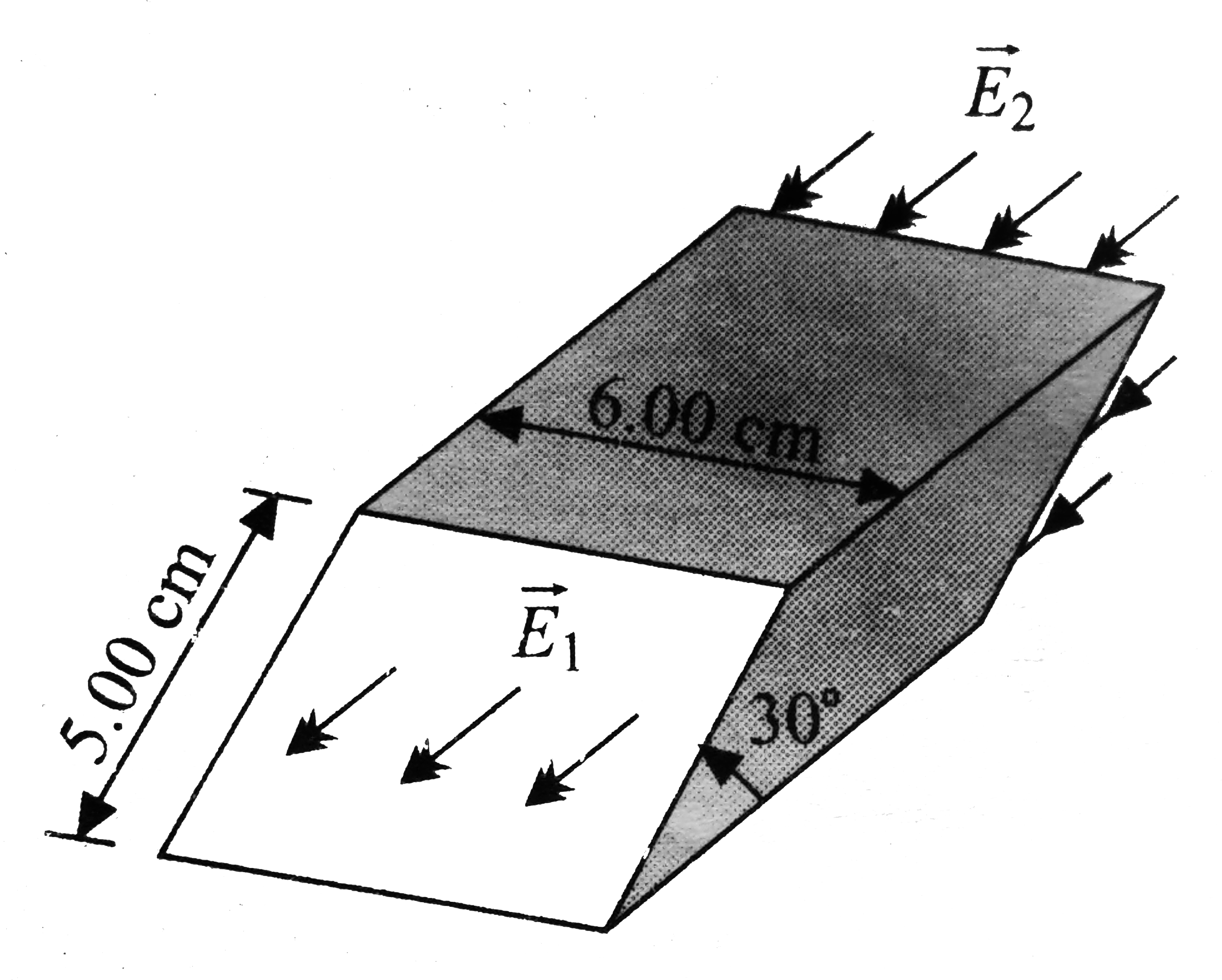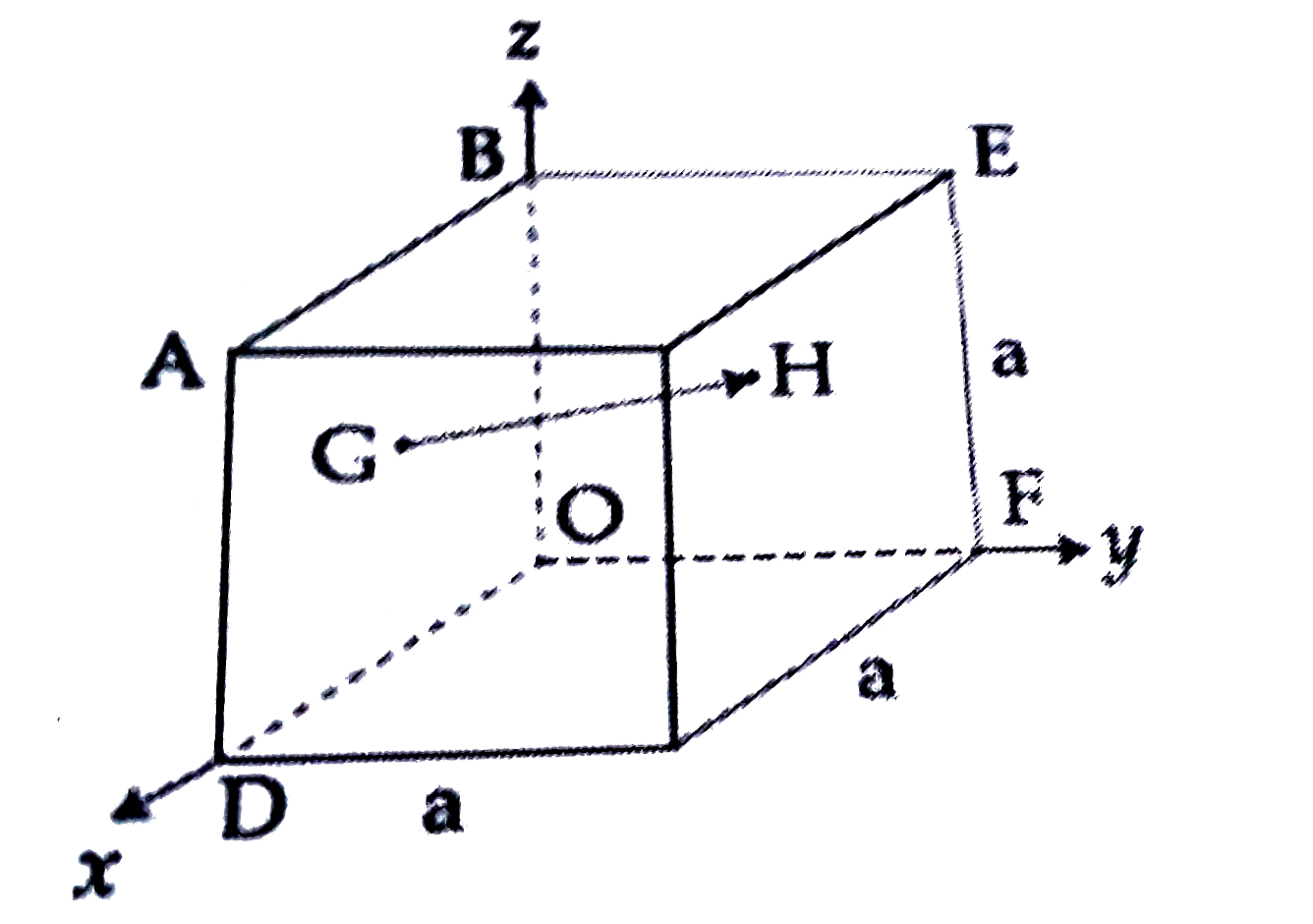The electric field →E1 at one face of a parallelopiped is uniform over the entire face and is directed out of the face. At the opposite face, the electric field →E2 is also uniform over the entire face and is directed into that face (as shown in figure). The two faces in question are inclined at 30∘ from the horizontal, →E1and→E2(both horizontal) have magnitudes of 2.50×104NC−1 and 7.00×104NC−1. respectively. Assuming that no other electric field lines cross the surfacesof the parallelopiped, the net charge contained with in is

−67.5ε0C
37.5ε0C
105ε0C
−105ε0C
The correct Answer is:A
a. To find the charge enclosed,
we need the flux through the
parallelepiped:
Φ1=AE1cos60∘
=(0.0500m)(0.0600m)(2.50×104NC−1)cos60∘
=37.5Nm2C−1
Φ2=AE2cos120∘
=(0.0500m)(0.0600m)(7.00×104NC−1)cos120∘
=−105Nm2C−1
So the flux is
Φ=Φ1+Φ2=(37.5−105)Nm2C−1=−67.5Nm2C−1
q=Φε0=(−67.5Nm2C−1)ε0=−5.97×10−10C
There must be a net charge (negative) in the parallelepiped since
there is a net flux flowing into the surface. Also, there must be an
external field, otherwise all lines would point towards the slab.
Topper's Solved these Questions
- ELECTRIC FLUX AND GAUSS LAWBook:CENGAGE PHYSICS ENGLISHChapter:ELECTRIC FLUX AND GAUSS LAWExercise:Multiple Correct
Explore 8 Videos
- ELECTRIC FLUX AND GAUSS LAWBook:CENGAGE PHYSICS ENGLISHChapter:ELECTRIC FLUX AND GAUSS LAWExercise:Comprehension
Explore 36 Videos
- ELECTRIC FLUX AND GAUSS LAWBook:CENGAGE PHYSICS ENGLISHChapter:ELECTRIC FLUX AND GAUSS LAWExercise:Subjective
Explore 12 Videos
- ELECTRIC CURRENT AND CIRCUITBook:CENGAGE PHYSICS ENGLISHChapter:ELECTRIC CURRENT AND CIRCUITExercise:Interger
Explore 8 Videos
- ELECTRIC POTENTIALBook:CENGAGE PHYSICS ENGLISHChapter:ELECTRIC POTENTIALExercise:DPP 3.5
Explore 15 Videos
Similar Questions
Knowledge Check
The magnitude of electric field →E in the annular region of a charged cylindrical capacitor.
Ais the same throughoutBis higher near the outer cylinder than near the inner cylinderCvaries as 1r2 where r is the distance from the axisDvaries as 1r3 where r is the distance from the axis.A dipole of moment →p is placed in a uniform electric field →E. The force on the dipole is →F and the torque is →τ
A(i), (ii) and (iii) are correctB(i) and (ii) are correct and (ii) is wrongConly (i) is correctD(i) and (ii) are correct and (iii) is wrong
A dipole of moment →p is placed in a uniform electric field →E. The force on the dipole is →F and the torque is →τ
View SolutionThe dimensions of the quantity →E×→B, where →E represents the electric field and →B the magnetic field may be given as :-
View SolutionIn the cube of side 'a' shown in the figure, the vector from the central point of the face ABOD to the central point of the face BEFO will be :

View SolutionA charge q is placed at the centre of the cubical vessel (with one face a open) as shown in figure. The flux of the electric field through the complete vessel is

View SolutionThe four lines drawing from the vertices of any tetrahedron to the centroid to the centroid of the opposite faces meet in a point whose distance from each vertex is 'k' times the distance from each vertex to the opposite face, where k is
View SolutionThe acceleration of the charge on the gap faces will cease when the total electric field within the ring becomes zero. For this to happen, the electric field E0 in the gap is
View Solution

